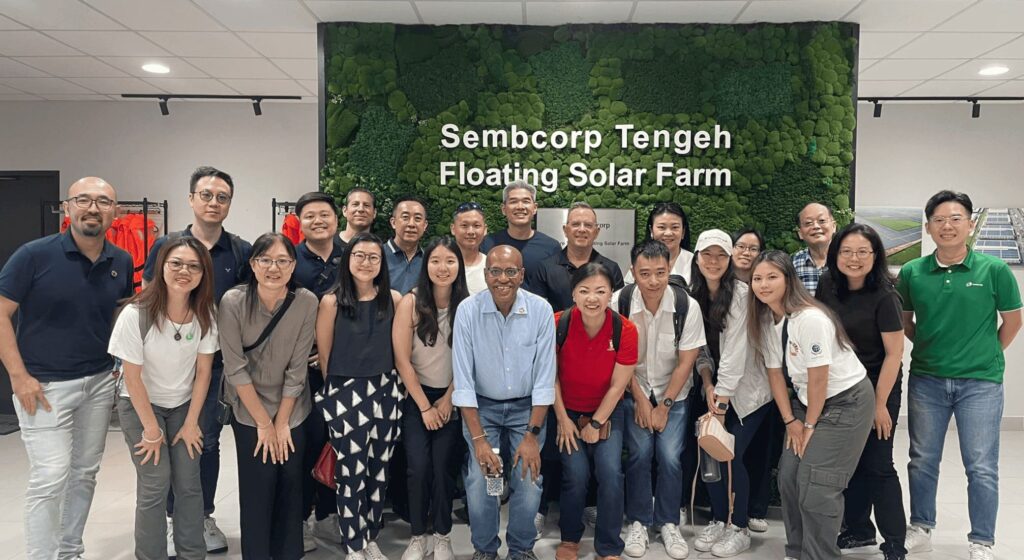Kyyte is a proud member company of the UN Global Compact Network Singapore (GCNS)(1).
As part of their recent sustainability summit, I had the unique opportunity to join other sustainability leaders in Singapore to visit the Sembcorp Tengeh Floating Solar Farm, Singapore’s first inland floating solar farm – a vital step in Singapore’s journey toward a greener future.
I chose to explore this project as it is a unique opportunity to witness the perfect balance of sustainability and technology, meeting some of Singapore’s growing environmental needs.
A new frontier for renewable energy in Singapore.
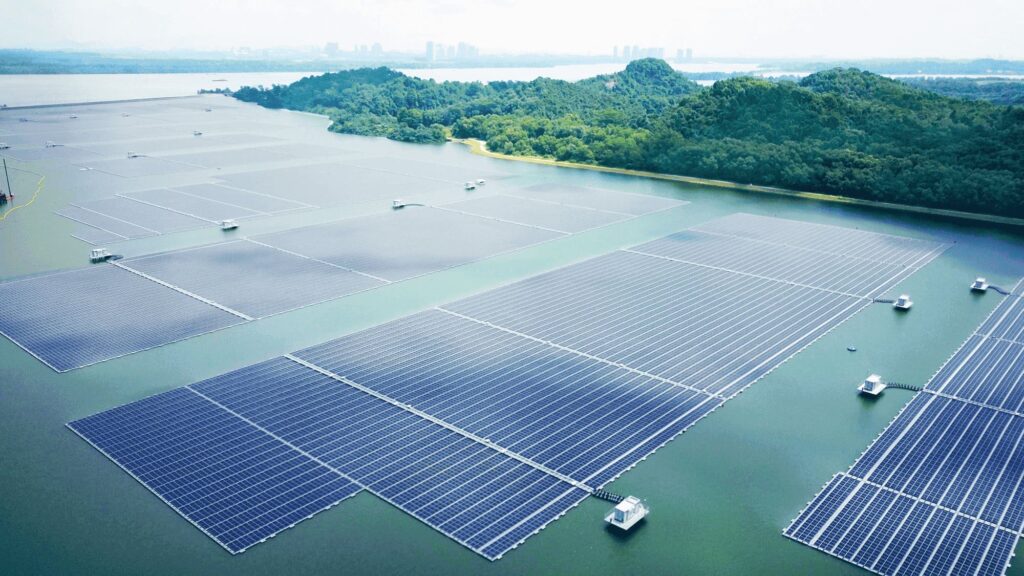
In land-scarce Singapore, renewable energy solutions require creativity and innovation. That’s where floating solar farms come in. By harnessing the potential of open water bodies, floating solar farms are a newly found solution that maximises energy production without taking up valuable land space.
The Sembcorp Tengeh Floating Solar Farm is a prime example of this, covering approximately one-third of the Tengeh Reservoir with 122,000 solar panels(2).
This massive infrastructure generates enough electricity to power about 16,000 4-room HDB flats, effectively offsetting more than 32 kilotonnes of CO2 annually, equivalent to taking 7000 cars off the road.
This makes it an engineering feat and a major contributor to Singapore’s sustainability goals and Green Plan 2030. Key targets under the Green Plan include increasing solar energy deployment by five-fold(3).
How does a floating solar farm work?
Floating solar farms operate similarly to traditional ground-mounted systems but offer unique advantages when installed on water.
One advantage is the cooling effect the water beneath the panels provides. As the solar panels float, the cooler environment helps maintain lower module temperatures, increasing their efficiency and energy output compared to land-based panels.
Once sunlight hits the solar panels, photovoltaic (PV) cells(4) within the panels convert the sunlight into direct current (DC) electricity. This electricity is then converted into alternating current (AC) via inverters, which can be fed into Singapore’s energy grid.
Innovation and sustainability at Sembcorp Industries Ltd.
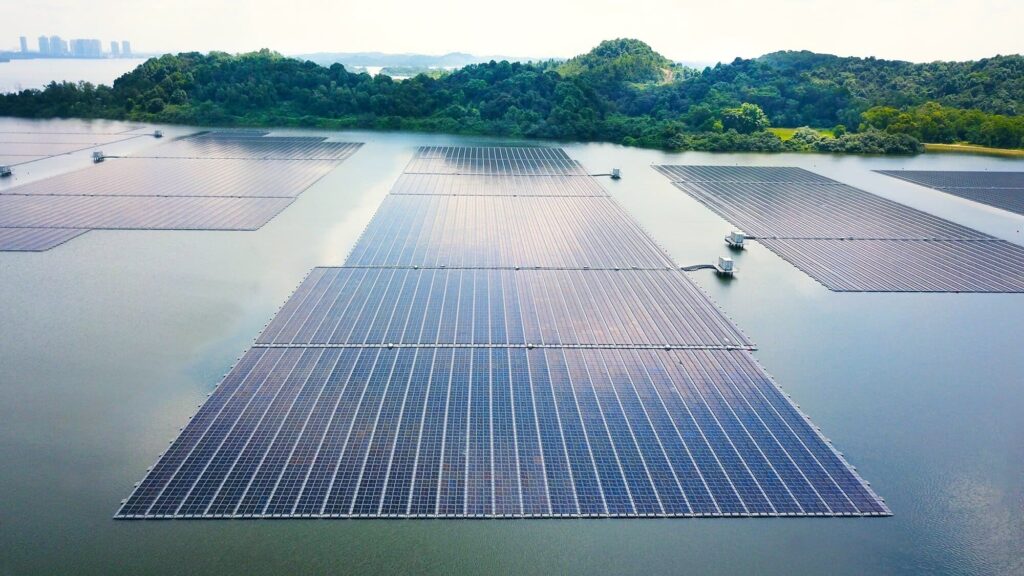
During the visit, I was impressed by the forward-thinking innovations that have been incorporated into the Sembcorp Industries Ltd. solar farm.
For instance, Sembcorp uses a digital monitoring platform that allows real-time fault detection and performance monitoring.
Additionally, drone deployment for operations and maintenance reduces manual inspection costs by about 30%, making the process more efficient and scalable.
One of the most fascinating aspects was the use of advanced drone electroluminescence imaging technology, a world-first on this scale, which allows for precise fault detection without interrupting operations.
This innovation, combined with in-house custom-built tools like solar panel assembly jigs, showcases how Sembcorp is not only contributing to renewable energy but also leading in engineering efficiency.
Environmental impact and biodiversity.
Floating solar farms aren’t just about generating clean energy – they’re also designed to minimise environmental disruption.
An Environmental Impact Assessment was conducted before construction to ensure the project wouldn’t negatively affect local ecosystems. Monitoring efforts have been developed according to the Environmental Monitoring and Mitigation Plan (EMMP)(5) to track the water quality and biodiversity at the reservoir.
In Singapore, we have a special place in our hearts for our river otters. The two species found here – the small-clawed otter (Aonyx cinerea) and the smooth-coated otter (Lutrogale perspicillata) have even crossbred. Since the late 1990s, sightings of smooth-coated otters have been on the rise along the northern coast and in the city’s rivers and canals.
During our visit, it was fascinating to learn that before construction of the solar farm began in 2020, about seven otters were living in and around Tengeh Reservoir. Today, that number has doubled, with up to 14 otters spotted at any given time, thriving alongside this remarkable solar project.
This delicate balance between nature and technology is what makes the Tengeh Floating Solar Farm a model of sustainable development.
Why floating solar farms matter.
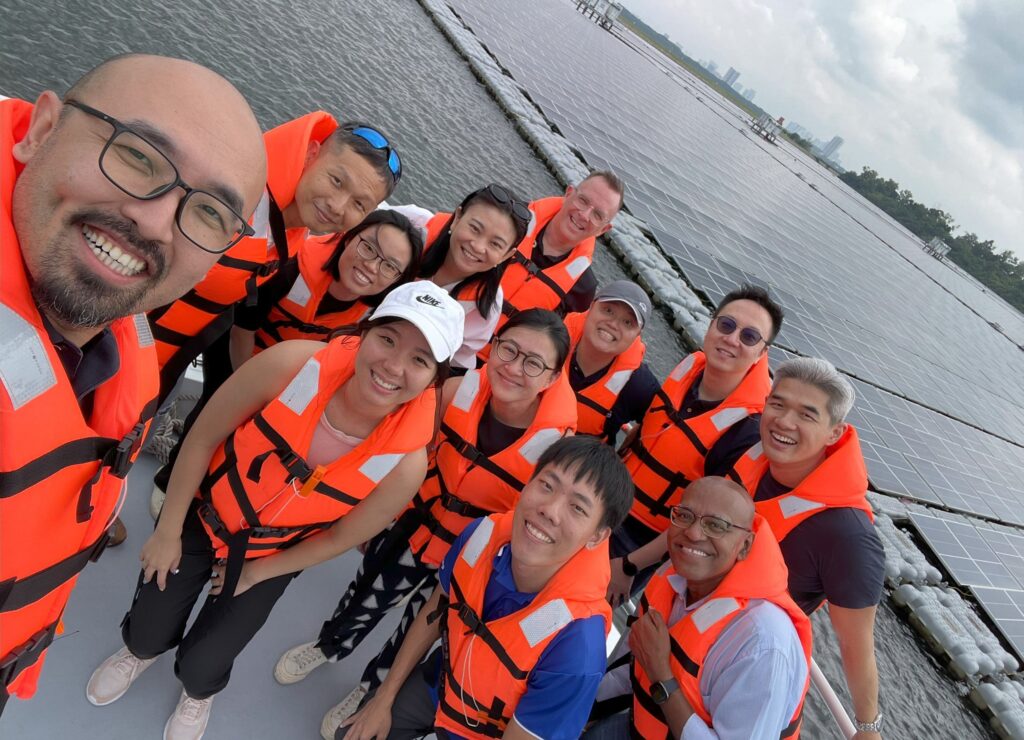
The importance of floating solar farms extends beyond just energy production. In areas like Singapore, where land is limited, finding alternative ways to generate renewable energy is crucial.
Floating solar farms open up new possibilities for efficient, large-scale solar power generation in urban and land-constrained regions globally.
This visit truly reinforced the notion that sustainability and innovation go hand in hand. Projects like the Tengeh Floating Solar Farm are proof that with the right vision and technology, we can move toward a future where clean energy solutions not only meet today’s needs but also safeguard tomorrow’s resources.
Conclusion.
As Singapore continues to develop smart and sustainable solutions, the Sembcorp Tengeh Floating Solar Farm stands as a shining example of how innovation can drive progress.
Visiting this solar farm offered a glimpse into the future of renewable energy and the powerful role that floating solar technology will play in addressing global energy needs.
Thank you to Sembcorp Industries and GCNS for this unique opportunity as part of my ongoing sustainability learning.
Gaining valuable insights for a sustainable future.
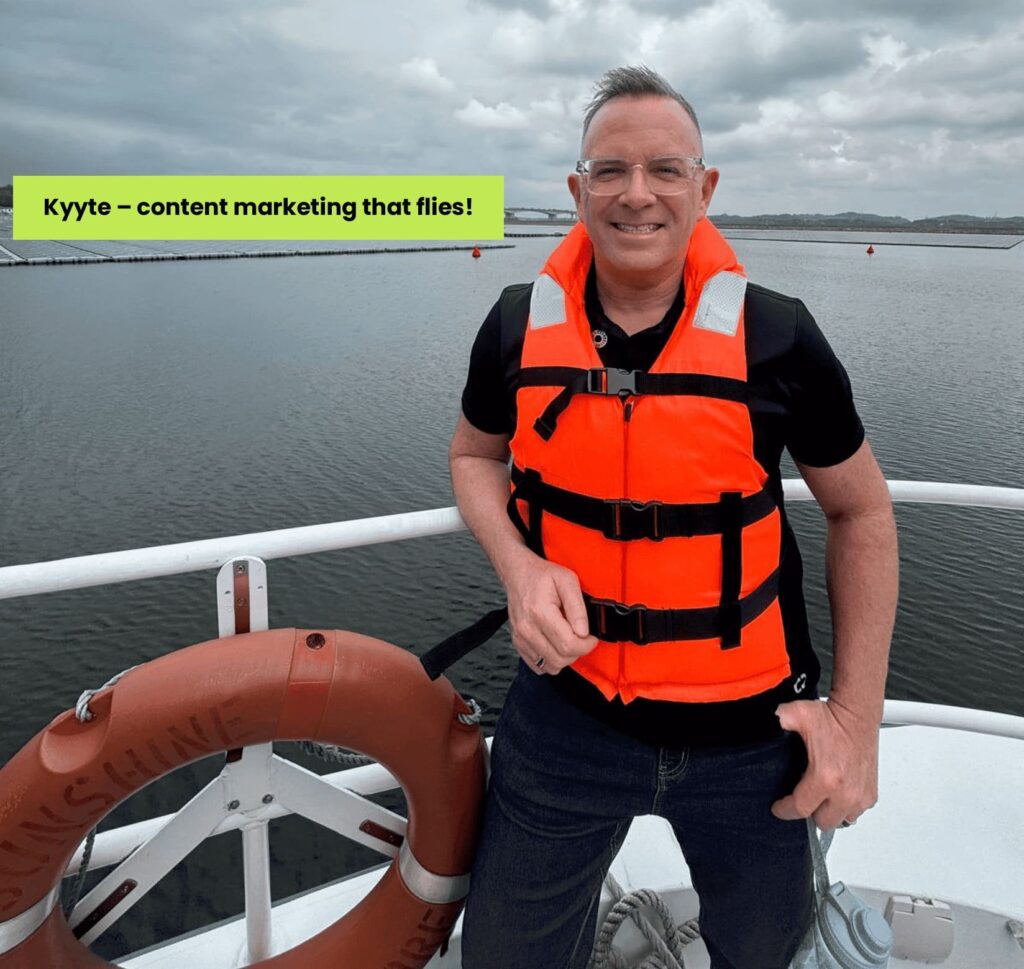
Visiting the Sembcorp Tengeh Floating Solar Farm was more than just an eye-opening experience. It reinforced the importance of sustainability in shaping the future.
At Kyyte, we always seek ways to bring these insights into our work, helping businesses communicate their sustainability initiatives with authenticity and impact.
The lessons learned from innovative projects like this inspire us to craft compelling narratives highlighting businesses’ crucial role in creating a greener, more resilient world.
Whether through clear messaging, copywriting case studies, or creating engaging content, Kyyte is committed to helping organisations share their sustainability content marketing stories in a meaningful and powerful way.
As we look ahead, we’re excited to continue supporting businesses pushing the boundaries of what’s possible in sustainability.
Sources.
- UN Global Compact Singapore
- Sembcorp Tengeh Floating Solar Farm
- Singapore Green Plan 2030 Targets
- Photovoltaic (PV) cells
- Environmental Monitoring and Mitigation Plan (EMMP)
